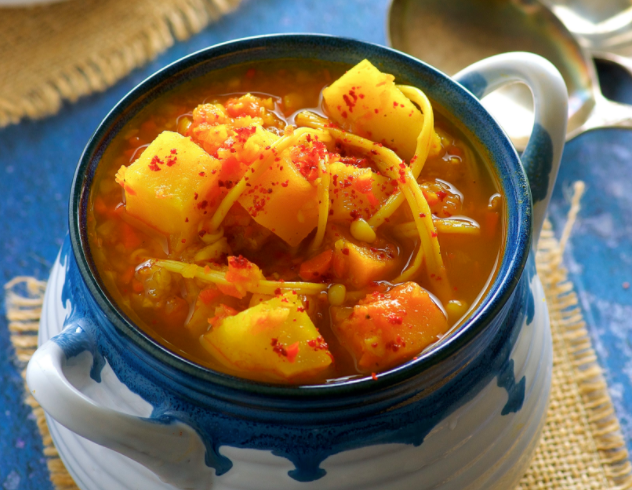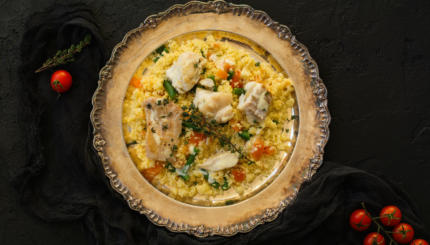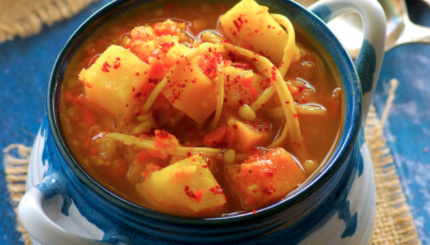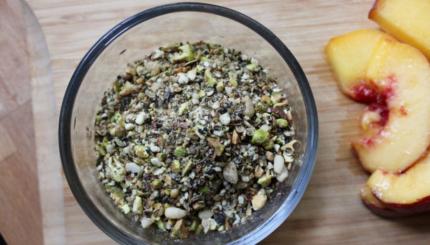For a variety of recipes from the Red Sea region, click here!
Yemen
When Israel was established in 1947‑48, it led to an astonishing event—the famous airlift, sometimes known as Operation Magic Carpet. It moved most of the remaining Yemenite community (about 50,000) to Israel during 1949 and 1950. They took with them their traditional way of life, including a limited but appealing style of cooking.

Agriculture is an important factor in establishing a cuisine, and semidesert or mountainous terrain does not produce the quantity and variety of food that is needed to inspire the creation of new combinations, which also conform to dietary laws. But within their limitations, they created food with an exotic appeal, proven today by the popularity of many Yemenite restaurants that have proliferated around Israel.

Help us keep Jewish knowledge accessible to millions of people around the world.
Your donation to My Jewish Learning fuels endless journeys of Jewish discovery. With your help, My Jewish Learning can continue to provide nonstop opportunities for learning, connection and growth.
READ: Israel’s Vibrant Jewish Ethnic Mix
Both song and story celebrate the admiration that has always been felt by the Jewish men of India for the Yemenite girls. This led to both intermarriage and an interchange of customs, some of which influenced their food, especially the seasonings.
Yemenite cooking can be reduced to a few categories, with the Indian influence quite often apparent. There are unusual and delicious breads for daily and Sabbath use; meat soups and meat stews (chicken is used only in soup—never roasted or fried); a spice mix for seasoning foods, and a hot chili chutney with fenugreek, a spice that is certainly of Indian origin. The Jews did not make cheese, but butter was prepared from the milk and cream of the cattle.
Yemenites have no desserts as such, but substitute fresh fruit in season. The snacks that replace sweets (jala) are the dry green beans, dry fava beans, dates, almonds, and other mixed nuts. They make a haroset of sesame seeds, honey, almonds, walnuts, and red wine; or with dates, sesame, walnuts, almonds, peanuts, raisins, wine, and hot water, cooked together to a paste. The nibbling goes on and on during the Sabbath.
Arak, a colorless alcoholic liquid, is the national drink of the Jews. It is made from grapes, plums, apricots or other seasonal fruits, and the taste differs according to the fruit used. Arak is the Sabbath ritual drink.
Try these Yemenite recipes:
Vegetarian Yemenite Soup
Yemenite Kubaneh Bread with Grated Tomato Dip
Everything Spiced Malawah with Fried Egg
Hawaij Hot Cocoa with Cinnamon Whipped Cream
Ethiopia

There had been, in the distant past, a historical connection between the Ethiopian, Yemenite, and Indian Jews. Trade was the glue that cemented these relationships, especially in ancient times when there was an open world to discover. The cooking of Ethiopian Jews, therefore, characterized by the use of pungent spices, is in my opinion a result of communication with India. Mustard, cardamom, coriander, caraway, turmeric, ginger are spices that I associate with India. The hot chili and tomato arrived later, perhaps as late as the eighteenth century after its introduction from Central America.
READ: Israeli Food from 1948 On
The staff of life for Ethiopians is Injeera, a large pancake prepared from a fermented batter of teff, an African grain of the millet family. A meal without this life-sustaining bread would be unthinkable.
Egypt
In the 19th century, the opening of the Suez Canal brought prosperity to Egypt and an influx of settlers until the Jewish population grew to 25,200. There were communities of Italian and Eastern European Jews in Alexandria, and Italian and Turkish in Cairo. The Jews of Salonika (Greece) followed. The new Jews from Europe, Africa, and the Middle East all added their influence to the cuisine, and it developed a Judaic style.
It would be a great culinary coup to report that I had discovered a cache of ancient Jewish recipes from the time of Moses in Egypt. Alas, this is not to be—it is the ordinary foods of everyday life in Egypt, the accumulation of the new foreign communities, that we have.
Onions, garlic, and cucumbers have been eaten in Egypt since 3,000 BCE. Slaves building the pyramids, some of them Jews, were fed garlic and onions for strength. Lentils, beans, rice, simply seasoned, are incorporated into Sabbath and daily foods. Hot chili is hardly ever used, but pepper and allspice are paramount seasonings. Vegetables and salads, in the hot, desiccating desert air, become life savers when interest is lost in meat and poultry.
Try these Egyptian recipes:
Koshary: Egyptian Lentil and Rice Recipe
Dukkah: the Egyptian Spice Blend You’ll Love
Haroset from Egypt
Excerpted and reprinted with permission from Sephardic Cooking, published by Donald I. Fine, Inc.


